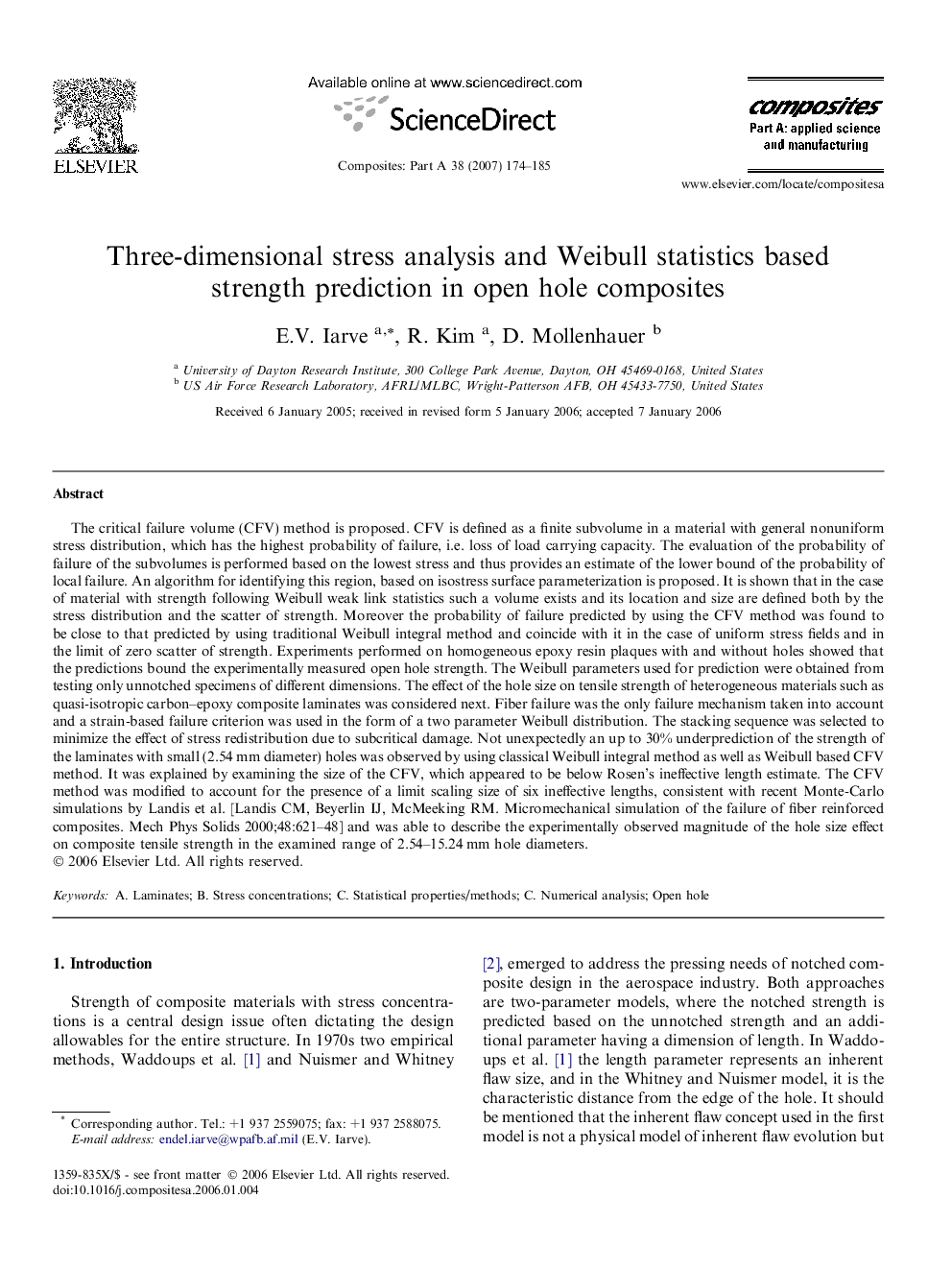| کد مقاله | کد نشریه | سال انتشار | مقاله انگلیسی | نسخه تمام متن |
|---|---|---|---|---|
| 1467725 | 990115 | 2007 | 12 صفحه PDF | دانلود رایگان |

The critical failure volume (CFV) method is proposed. CFV is defined as a finite subvolume in a material with general nonuniform stress distribution, which has the highest probability of failure, i.e. loss of load carrying capacity. The evaluation of the probability of failure of the subvolumes is performed based on the lowest stress and thus provides an estimate of the lower bound of the probability of local failure. An algorithm for identifying this region, based on isostress surface parameterization is proposed. It is shown that in the case of material with strength following Weibull weak link statistics such a volume exists and its location and size are defined both by the stress distribution and the scatter of strength. Moreover the probability of failure predicted by using the CFV method was found to be close to that predicted by using traditional Weibull integral method and coincide with it in the case of uniform stress fields and in the limit of zero scatter of strength. Experiments performed on homogeneous epoxy resin plaques with and without holes showed that the predictions bound the experimentally measured open hole strength. The Weibull parameters used for prediction were obtained from testing only unnotched specimens of different dimensions. The effect of the hole size on tensile strength of heterogeneous materials such as quasi-isotropic carbon–epoxy composite laminates was considered next. Fiber failure was the only failure mechanism taken into account and a strain-based failure criterion was used in the form of a two parameter Weibull distribution. The stacking sequence was selected to minimize the effect of stress redistribution due to subcritical damage. Not unexpectedly an up to 30% underprediction of the strength of the laminates with small (2.54 mm diameter) holes was observed by using classical Weibull integral method as well as Weibull based CFV method. It was explained by examining the size of the CFV, which appeared to be below Rosen’s ineffective length estimate. The CFV method was modified to account for the presence of a limit scaling size of six ineffective lengths, consistent with recent Monte-Carlo simulations by Landis et al. [Landis CM, Beyerlin IJ, McMeeking RM. Micromechanical simulation of the failure of fiber reinforced composites. Mech Phys Solids 2000;48:621–48] and was able to describe the experimentally observed magnitude of the hole size effect on composite tensile strength in the examined range of 2.54–15.24 mm hole diameters.
Journal: Composites Part A: Applied Science and Manufacturing - Volume 38, Issue 1, January 2007, Pages 174–185